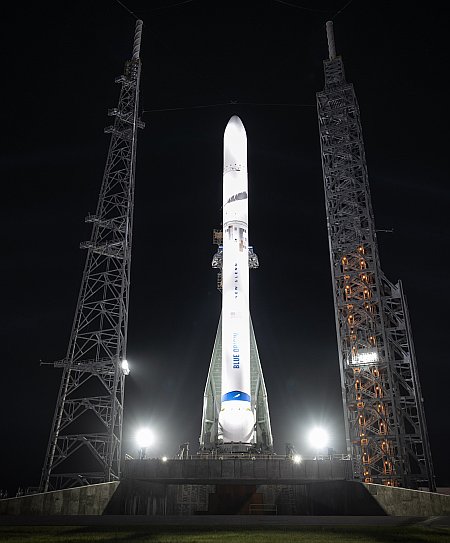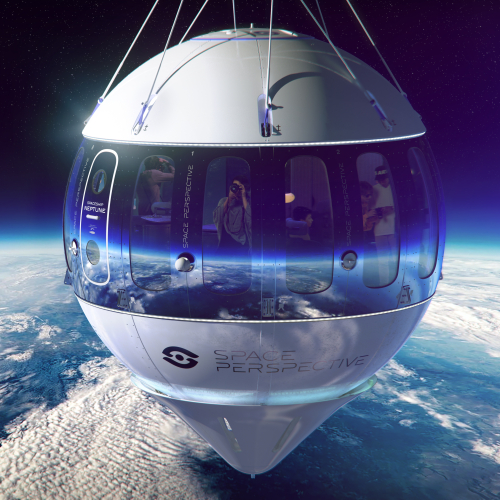Odysseus is on its side, some antennas blocked
It appears the reason communications with Intuitive Machines’ Odysseus lunar lander has been so difficult since its landing yesterdary is that something caused it to fall over so that it is now lying on its side, blocking some of its antennas.
Intuitive Machines initially believed its six-footed lander, Odysseus, was upright after Thursday’s touchdown. But CEO Steve Altemus said Friday the craft “caught a foot in the surface,” falling onto its side and, quite possibly, leaning against a rock. He said it was coming in too fast and may have snapped a leg. “So far, we have quite a bit of operational capability even though we’re tipped over,” he told reporters.
But some antennas were pointed toward the surface, limiting flight controllers’ ability to get data down, Altemus said. The antennas were stationed high on the 14-foot (4.3-meter) lander to facilitate communications at the hilly, cratered and shadowed south polar region.
Its exact location also appears to be several miles from its intended landing site next to the crater Malapart A. Scientists who operate Lunar Reconnaissance Orbiter (LRO) hope orbital images this weekend will identify the spacecraft’s precise location.
The company also revealed that the reason its own laser guidance system would not function — requiring a quick software patch allowing the spacecraft to use a different NASA system — was because “a switch was not flipped before flight.”
Because of this switch in navigation equipment it was decided to cancel the release of the student-built camera probe dubbed Eaglecam that was supposed to be released when Odysseus was about 100 feet above the surface and take images of the landing. Instead, it is now hoped it can be released post landing and get far enough away to look back and capture photos of the lander.
All these problems however do not make this mission a failure. Like Japan’s SLIM lander, the primary goal of this mission was to demonstrate the technology for softlanding an unmanned spacecraft on the Moon. Intuitive Machines has succeeded in this goal. Though obviously some changes must be made to improve this engineering, the success with Odysseus strongly suggests the next mission later this year will do far better.
It appears the reason communications with Intuitive Machines’ Odysseus lunar lander has been so difficult since its landing yesterdary is that something caused it to fall over so that it is now lying on its side, blocking some of its antennas.
Intuitive Machines initially believed its six-footed lander, Odysseus, was upright after Thursday’s touchdown. But CEO Steve Altemus said Friday the craft “caught a foot in the surface,” falling onto its side and, quite possibly, leaning against a rock. He said it was coming in too fast and may have snapped a leg. “So far, we have quite a bit of operational capability even though we’re tipped over,” he told reporters.
But some antennas were pointed toward the surface, limiting flight controllers’ ability to get data down, Altemus said. The antennas were stationed high on the 14-foot (4.3-meter) lander to facilitate communications at the hilly, cratered and shadowed south polar region.
Its exact location also appears to be several miles from its intended landing site next to the crater Malapart A. Scientists who operate Lunar Reconnaissance Orbiter (LRO) hope orbital images this weekend will identify the spacecraft’s precise location.
The company also revealed that the reason its own laser guidance system would not function — requiring a quick software patch allowing the spacecraft to use a different NASA system — was because “a switch was not flipped before flight.”
Because of this switch in navigation equipment it was decided to cancel the release of the student-built camera probe dubbed Eaglecam that was supposed to be released when Odysseus was about 100 feet above the surface and take images of the landing. Instead, it is now hoped it can be released post landing and get far enough away to look back and capture photos of the lander.
All these problems however do not make this mission a failure. Like Japan’s SLIM lander, the primary goal of this mission was to demonstrate the technology for softlanding an unmanned spacecraft on the Moon. Intuitive Machines has succeeded in this goal. Though obviously some changes must be made to improve this engineering, the success with Odysseus strongly suggests the next mission later this year will do far better.





